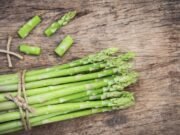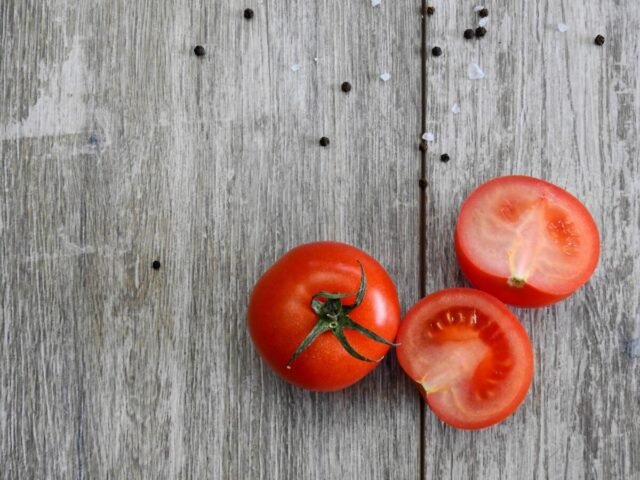Juicy, vine-ripened tomatoes fresh from the garden are one of summer’s simple pleasures. Growing tomatoes is a rewarding endeavor that both novice and experienced gardeners can undertake successfully. With proper care and attention, even a small garden or patio can produce an abundant tomato crop. This comprehensive guide provides tips and techniques for planting, nurturing, and harvesting tomatoes.
An Introduction to Tomato Gardening
Tomatoes are the most popular garden vegetable for good reason. Their sweet, complex flavor simply can’t be matched by grocery store offerings. Plus, tomatoes are packed with beneficial nutrients like lycopene, vitamin C, and potassium.
Growing tomatoes is a relatively easy task, though some knowledge of tomato plant requirements is helpful. With the right conditions, tomato plants will reward you with ample fruit throughout the growing season. Determining the best tomato varieties, providing optimal care, and troubleshooting problems along the way will ensure your tomato-growing success.
The Benefits of Growing Tomatoes
Nurturing tomato plants from seed to fruit offers many rewards:
- Flavor – Homegrown tomatoes taste far superior to store-bought options. You can harvest them at peak ripeness for best flavor.
- Variety – Grow heirloom, cherry, paste, and other types to enjoy diverse colors, shapes, sizes and tastes.
- Nutrition – Tomatoes contain antioxidants like lycopene and vitamin C for healthy bodies.
- Satisfaction – Watching tiny seedlings mature into abundant fruiting plants is deeply gratifying.
- Savings – Growing your own tomatoes can yield pounds of produce for minimal investment.
With proper care, even novice gardeners can reap a bountiful tomato crop. Let’s explore how to grow tomatoes successfully.
Choosing the Best Tomato Varieties
Selecting productive tomato varieties suited to your growing conditions is the first step. Tomatoes fall into two main categories:
Determinate Tomatoes
Determinate tomato varieties are compact and grow to a predetermined height. They produce most of their fruit in a single burst over a 2-4 week period. As such, they are excellent choices for canning and preserving purposes.
Some recommended determinate tomato varieties include:
- Celebrity – A disease-resistant hybrid that produces 8-10 oz red fruit. It’s an All-America Selections winner.
- Roma – A paste tomato ideal for sauces and canning. Each plant yields dozens of plum-shaped red fruit.
- Red Cherry – Prolific plants produce hundreds of bite-sized, sweet red tomatoes perfect for snacking.
- Sun Gold – These golden orange cherry tomatoes are incredibly sweet and ideal for salads and snacks.
Indeterminate Tomatoes
Indeterminate tomatoes continue growing and producing fruit all season until frost. Though they require more care, they yield higher quantities of fruit.
Some top-rated indeterminate varieties include:
- Brandywine – This heirloom beefsteak type bears 1-2 lb pink fruit with incredible flavor.
- Beefmaster – A hybrid beefsteak with large, meaty, red fruit up to 2 lbs. It has disease resistance.
- San Marzano – Italian heirloom paste tomato prized for sauce and canning. Produces 3-4 oz fruit in clusters.
- Sungold – Extremely sweet orange cherry tomatoes that thrive on indeterminate vines.
This list provides a starting point, but don’t be afraid to experiment with heirlooms and hybrids to find your favorites.
Starting Tomato Plants from Seed
While you can purchase tomato transplants, starting from seed allows you to grow a wider variety of tomatoes. Here’s how to get seeds started:
When to Start Tomato Seeds
Start seeds indoors 6-8 weeks before your last expected frost date. This gives ample time for seedlings to mature before transplanting. Consult your local frost dates and adjust accordingly.
Tomato Seed Starting Supplies
You’ll need containers, seed starting mix, seeds, and a warm, well-lit area. Some recommended supplies include:
- Plastic seed trays or peat pots
- Seed starting mix or potting soil
- Tomato seeds
- Grow lights or sunny window
- Small greenhouse or seedling heat mat (optional)
Sowing Tomato Seeds
Fill containers with moistened seed starting mix. Sow seeds 1⁄4 inch deep. Space seeds at least 2 inches apart to allow room for growth. Cover containers with plastic wrap or a greenhouse dome to retain moisture.
Caring for Tomato Seedlings
Place containers in a warm area (70-80°F) with plenty of light. Bottom heat from a seedling heat mat accelerates germination. Once sprouted, remove the plastic wrap. Water regularly to keep the soil moist but not saturated.
When the first true leaves appear, begin fertilizing with a diluted liquid tomato fertilizer or fish emulsion. Once seedlings reach 3-4 inches tall, transplant them into larger containers or the garden. Gradually expose seedlings to outdoor conditions over 7-10 days to harden them off before transplanting.
Transplanting Tomato Seedlings to the Garden
Tomato seedlings should be moved into the garden after all danger of frost has passed. Follow these tips for transplanting success:
Preparing the Garden Site
Select a site with full sun (at least 6 hours of direct light daily) and fertile soil. Improve native soil by mixing in several inches of compost or other organic matter. Ideal garden soil is loose, well-draining, and nutrient-rich.
Install tomato cages or stakes prior to transplanting. Determinate varieties only need short 14” cages. Indeterminate varieties benefit from tall 5-6’ stakes or cages for support.
Hardening Off Tomato Seedlings
A week before transplanting, set tomato seedlings outdoors for a few hours daily, gradually increasing time outside to harden them off. Bring seedlings indoors if temperatures drop below 50°F. Reduce watering during this period.
Transplanting Tomato Seedlings
Transplant on a calm, cloudy day to reduce stress. Dig holes the same depth as the seedling root ball. Place seedlings slightly deeper, burying stems up to the lowest set of leaves. Refill holes and gently tamp soil. Space plants 18-36” apart depending on variety.
Water transplants thoroughly. Consider using a starter fertilizer solution the first week to help establish roots. Add mulch around plants to retain moisture and reduce weeds.
Caring for Tomato Plants
With proper care, tomato plants will flourish and produce heavily. Here are some tips:
Watering Tomatoes
Tomatoes require consistent moisture for optimal growth. Provide 1-2 inches of water weekly from rain or irrigation. Avoid overhead watering, which can promote disease. Instead, use drip irrigation or direct water to the soil base.
Maintain even soil moisture, especially during fruit set and development stages. As fruits ripen, reduce water to concentrate flavors. Irregular watering can cause issues like blossom end rot.
Mulching Tomato Plants
Spread 2-3 inches of organic mulch like straw, leaves, or wood chips around plants. Mulch conserves moisture, suppresses weeds, and keeps soil cooler. Renew mulch midseason if it starts to break down.
Fertilizing Tomatoes
Tomatoes are heavy feeders. Incorporate compost or aged manure before planting. Side dress growing plants monthly with a balanced fertilizer. Avoid high-nitrogen formulas, which promote leafy growth over fruit production.
Fish emulsion, seaweed extract, compost tea, and calcium supplements also provide excellent nutrition for tomato growth and fruiting.
Supporting Tomato Plants
As tomato plants grow, secure them to stakes or cages to prevent sprawling. Prune suckers (small shoots between stems and branches) to focus energy on fruiting.
Train indeterminate varieties to a single leader. Tie main stem loosely to the support stake as it grows using soft plant ties or twine.
Common Tomato Problems and Solutions
While tomatoes are generally easy to grow, they can encounter some common problems. Here are solutions for the most frequent tomato issues:
Preventing and Treating Tomato Diseases
Tomatoes can be susceptible to diseases like early blight, late blight, and verticillium wilt. Use preventive measures to avoid issues:
- Choose disease-resistant varieties
- Rotate planting locations yearly
- Avoid overhead watering
- Stake plants and prune for airflow
- Disinfect tools between plants
If disease occurs, prune and destroy affected foliage and fruit. Treat with organic fungicides like neem oil or copper soap as needed.
Controlling Tomato Pests
Tomato pests include hornworms, whiteflies, cutworms, and aphids. Pick larger pests off by hand or use organic insecticidal soap sprays as needed. Beneficial insects like ladybugs help control aphids. Row covers exclude pests early-season.
Correcting Blossom End Rot
Blossom end rot causes black leathery spots on tomato bottoms. It’s caused by irregular watering leading to calcium deficiency. Maintain even moisture and avoid drastic fluctuations. Spraying calcium supplements on foliage can also help treat and prevent this disorder.
Preventing Tomato Cracking
Erratic watering often causes tomato cracking. Maintain steady moisture levels from flowering through harvest to avoid splitting. Cracking resistant tomato varieties are also available.
Harvesting Tomatoes for Maximum Flavor and Production
Determining peak ripeness is key for harvesting flavorful tomatoes. Here’s what to look for:
Identifying Ripeness
Tomatoes ripen from the inside out, so color alone doesn’t indicate readiness. Ripe tomatoes feel firm yet springy and smell sweet. Smooth, shiny skin with bright color indicates peak ripeness.
Tomatoes are ripe when they detach easily from the vine with a gentle twist. Allow them to fully ripen on the vine for ideal flavor.
Picking Tomatoes for Continued Production
Harvest tomatoes regularly to keep plants producing. Gently twist ripe tomatoes to remove them from the stem. Use pruners or shears for hard-to-reach fruit to avoid damaging the plant.
Pick tomatoes as soon as they reach desired color and firmness. Flavor continues improving off the vine. Overripe tomatoes left on the vines signal plants to stop producing.
Storing the Tomato Bounty
Once picked, move tomatoes to a shaded area out of direct sun. Cherry and small tomatoes hold for 5-7 days at room temperature. Store full-sized tomatoes stem-side down on the counter away from heat sources.
For longer storage, keep tomatoes between 55-70°F. Don’t refrigerate raw tomatoes, as cold damages texture and flavor.
Freeze excess tomatoes whole, diced, or pureed into sauce. Canning whole or crushed tomatoes preserves summer flavor for homemade recipes all year long.
Enjoying the Fruits of Your Labor
Homegrown tomatoes make any dish irresistible. Here are some ideas for using up your tomato harvest:
- Toss sliced tomatoes into fresh salads, salsas, and bruschetta.
- Make classic tomato sauce, soups, and stews using fresh tomatoes.
- Roast cherry and grape tomatoes with olive oil, herbs, and garlic for caramelized flavor.
- Grill thick tomato slices and serve them stacked on grilled bread.
- Puree excess tomatoes and freeze into cubes for use in sauces and stews this winter.
- Can diced tomatoes, sauces, salsas, pasta sauce, and tomato juice.
The possibilities for preparing homegrown tomatoes are endless. Share the bounty with friends and family to brighten any meal.
Embark on Your Tomato-Growing Adventure
Cultivating tomatoes is one of the most gratifying gardening experiences. With proper care and variety selection, even novice gardeners can achieve success. This guide outlines the key practices for getting started.
For more information, consult local Extension services and gardening resources. Connect with community gardens and other tomato growers to share knowledge.
The satisfaction of biting into a homegrown tomato is unbeatable. As your tomato plants progress from seedlings to heavy harvesters, you’ll gain the confidence and knowledge to expand your gardening horizons. Happy growing!































